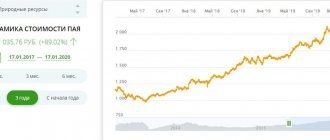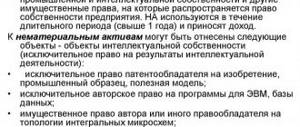The efficiency of a company is determined by solvency indicators, for which they analyze the liquidity of assets, i.e. property, material and financial assets used in conducting activities. All of them have varying degrees of turnover, that is, the ability to convert into money or other means of payment, since solvency depends on the speed of such exchange of values. Let's consider what highly liquid assets are, what role they play in the company's work, and how they are recorded on the balance sheet.
Asset liquidity
Company assets that can be quickly and profitably converted into money are called liquid. The most highly liquid asset is the funds that the company has in cash, accounts, and deposits. Good liquidity of assets in securities that can be sold profitably on the stock exchange at any time. The least liquid are considered to be inventories of raw materials, materials, and the value of work in progress. The accounting analysis of balance sheet liquidity is based on the principle of increasing liquidity; the most important when preparing the balance sheet are three coefficients:
- absolute liquidity;
- quick liquidity;
- current liquidity.
There are several groups of asset liquidity, depending on the speed of implementation.
Quickly implemented
These are products that can be sold in a short period of time and get paid for it. Designation – A2 These include:
- current assets;
- accounts receivable for the current period.
Slow to implement
Such funds are sold slowly, but most often their sale occurs without any obstacles. Designation – A3. Assets include:
- reserves;
- accounts receivable with a maturity of more than 12 months;
- securities with a long period of validity and others.
Difficult to implement
Such products are sold the slowest. Designation – A4. Their main purpose is to conduct business activities.
Liquidity of assets is their ability to be converted into cash. Considering that the level of liquidity of property is assessed through its rate of turnover into money, it is cash that is considered absolutely liquid assets.
Therefore, liquid assets are assets that can be exchanged for money. Accordingly, the lower the rate at which assets are converted into cash, the less liquid they are.
Highly liquid
Another name is absolutely liquid assets, the designation is A1. This is the company's cash, which is located:
- at the register;
- on bank accounts;
- on deposits and so on.
Government loan securities with a short period of validity also belong to this group. The peculiarity of such assets is that they can be quickly used to pay off debt obligations.
Only those elements that simultaneously meet several requirements can be accepted for their calculation.
First of all, the right to make decisions that will allow you to quickly receive funds for these assets should be with the relevant banking division.
Also, they should not belong to the group that is used for the current direct functioning of the institution or is subject to various types of obligations.
Securities can be included in the highly liquid assets of a banking-type organization only if they are its property or have received legislatively established opportunities to manage such elements from the direct owner.
It should be noted that, depending on the type and characteristics, they may relate to different levels of the VLA.
Thus, we can conclude that all highly liquid assets of the bank are practically any elements that can be converted into cash in the short term, and there are no obstacles to this.
Composition of the VLA
Highly liquid financial assets of a banking enterprise include two levels (VLA-1 and VLA-2). Moreover, the second level is also divided into two subcategories: types A and B.
It should be noted that no discount factor is applied to VLA-1, but in the VLA-2 version it is used, and there is already a direct dependence on the subcategory.
So, for VLA-2A a coefficient of 15% applies, and for VLA-2B, depending on the variety, from 25% to 50%. 25% applies to mortgages and 50% to everything else.
This approach allows us to assess the ability of any banking organization to fulfill its own obligations to clients and allows us to stabilize the economic situation.
Highly liquid assets of the first level include checks, cash, and funds in branch accounts.
This also includes amounts placed in the accounts of the Bank of Russia and relevant government organizations of other countries, as well as securities of various types, if they meet all the above requirements or are owned.
It should be noted that various debt securities can also act as a highly liquid asset, but only if they were issued by countries with a rating of 0 or 1.
If this indicator is at a lower level, then such securities move to the second level of the VLA.
Highly liquid assets of the second level, as mentioned above, are divided into two subgroups.
The first "A". It includes debt securities issued by countries with a score of 2 and mortgage-backed bonds issued by banks.
It should be noted that these elements can only be taken into account if the depreciation rate is less than 10%.
The second group is “B”. This also includes bonds covered by a mortgage, but issued by legal entities that are not residents, as well as ordinary shares. The depreciation rate should not exceed 20%.
Considering all of the above, highly liquid assets on a bank's balance sheet are the most efficient items that can be converted into cash very quickly, thereby ensuring a high level of fulfillment of the obligations of that particular financial institution to its customers and creditors.
Gradation of assets by degree of liquidity
In addition to highly liquid assets, there are liquid, medium-liquid and poorly marketable assets.
Liquid assets include accounts receivable with short repayment periods - from own personnel and contractors (line 1230), and other current assets accounted for in line 1260. These indicators are combined into group A2.
Medium-liquid assets are considered to be inventory items and product inventories that can be sold within six months (A3); low-liquid assets include fixed assets, intangible assets (their sale takes quite a long time and does not always lead to a satisfactory result) and long-term accounts receivable (A4).
Thus, on the left side of the balance sheet all assets are accumulated, grouped according to the principle of increasing liquidity. Highly liquid assets are located in the company's current assets section, higher - liquid assets, consisting of inventories and receivables, hard-to-sell assets - in the non-current assets block.
Liquidity management
In order for this element of the bank to be at a high level, it is necessary to manage it on an ongoing basis.
For this purpose, there are special standards for calculating instant, current and long-term liquidity, which allow us to assess the entire situation. Controlling this is a very difficult process, since it can be influenced by a huge number of various factors, the existence of which the analyst may not even suspect.
It is precisely in order to still obtain at least approximate information that the above standards are used.
The calculation of instant liquidity implies the ability to fulfill the bank’s obligations to its clients within one business day.
The amount of such assets must be sufficient to match the current level of liabilities.
The standard for calculating current liquidity is used to limit the bank’s capabilities regarding the loss of this element within 30 days, and long-term accounting is responsible for the same indicator, but for a period of 365 days.
This approach allows you to control the current situation, as well as have at least an approximate forecast for a fairly long period of time.
Peculiarities
In accordance with current legislation, if highly liquid assets no longer meet certain requirements listed above, then they can still take part in the calculation, but for no more than 30 days.
It is also necessary to remember that the total amount of VLA-2 should not exceed 40% of the total amount, and its subtype VLA-2B should not exceed 15%.
Regulation of liquidity levels is carried out by each bank independently, based on developed internal documents.
Nevertheless, any actions in this direction should not violate the law and go beyond the framework established at the state level.
This approach allows different financial organizations to develop their own liquidity control methodology, which will be optimal for them.
Management of highly liquid assets of the enterprise - securities
The company's cash reserves should not be endless. The financial manager must determine the size of the reserve based on the fact that the cost of existence of funds at the enterprise does not exceed the maximum interest income on government securities. Government securities are considered the most highly liquid, i.e. those that can always be converted into money; there is always a fairly stable demand for them.
Highly liquid securities are the most risk-free placement of free funds that generate a certain income. When using highly liquid securities, enterprises often carry out the so-called. REPO operations. REPO transactions are an agreement on the mandatory repurchase of securities. A direct repo transaction involves one party selling a block of securities to the other with an obligation to buy it back at a pre-agreed price (usually greater than the original purchase price).
In the Western market, two models are most often used for managing highly liquid securities as a tool for “maintaining” the temporarily free funds of an enterprise: the Baumol model, the Miller-Orr model. The Baumol model consists of a procedure for purchasing highly liquid securities and their subsequent sale by an enterprise to obtain the necessary funds. It is assumed that the enterprise begins to operate with an appropriate amount of cash and spends it over a certain period of time.
It invests all funds received from product sales in short-term securities. As soon as the cash reserve decreases - it decreases to zero or becomes less than a certain specified level, the company sells securities until it replenishes the cash reserve to its original value. This model is suitable for enterprises whose cash expenses are stable and predictable.
The Miller-Orr model is useful when it is impossible to predict daily cash outflows and inflows. The model assumes that the company's account balance changes randomly until it reaches an upper limit. At this point, the company buys a package of highly liquid securities in an amount equal to the difference between the upper limit and the average value of cash reserves.
If the cash reserve reaches the lower limit, then the company sells securities and replenishes the cash reserve to the normal level. When deciding on the values of the lower and upper cash balances, you should proceed as follows: if the daily variability of cash flows is large or the fixed costs associated with transactions with securities are high, then the enterprise should increase the difference between the balances and vice versa.
It is recommended to reduce the difference if there is an opportunity to generate income due to high interest rates on securities. When choosing securities, you must first of all be guided by information about the safety of invested funds.
Concept
In the Russian language, many words are borrowed from Latin. Liquidity is one of them. Translated, it means “flowing.” What does it mean when we talk about highly liquid assets? They can easily flow into money.
In other words, highly liquid assets are those that can be quickly sold without reducing their value. In the case of investing, we mean any instruments in which funds can be invested. These include:
- business;
- exchange assets (securities, futures, currency);
- real estate;
- gold;
- bank deposits;
- investment fund units;
- goods.
Liquidity can be not only high, but also low and medium. These categories differ in the length of time it takes for the asset to be sold at the market price. Thus, highly liquid assets are converted into money literally in a day or several days.
If an asset has an average degree of liquidity, it will take several weeks, and sometimes even a month, to sell it. In this case, there may be a loss in price, that is, the investor will incur a small loss.
There is a general problem with low-liquidity assets. It's difficult to sell them because there are clearly no buyers queuing for them. For this operation to take place, you need to wait several months or even a year. Often you have to significantly reduce the price for this.
Commercial bank assets
The assets of a commercial bank, or placed funds, are divided into objects and areas of investment, which can be: cash (national and foreign currency), precious metals and precious stones, loans to various types of borrowers and for various purposes, securities, real estate, material and technical means, etc. This grouping of assets is of the most general nature and is to some extent conditional.
In particular, loans as money capital function in various spheres and sectors of the national economy and are used to form various final investment objects (investments) - working capital and fixed capital. At the same time, this grouping reflects the historically established areas of bank investments and is secured by certain sections of the bank balance sheet.
Structure of assets The Chart of Accounts of credit institutions identifies the following composition of banking assets: cash balances on correspondent accounts; cash balance in the bank's cash desk; mandatory reserves with the Central Bank of the Russian Federation (“reserve requirements”); foreign currency; loans issued; investments in securities; investments in the authorized capital of other enterprises; investments in precious metals and stones; real estate investments; material and technical base of the bank; other assets.
Liquidity analysis
The liquidity of all company assets is determined by the ratio of available highly liquid assets to debts and financial liabilities.
In simple words, to determine the degree of liquidity of a company, it is necessary to divide the amount of highly liquid assets by the amount of current liabilities. The result is a liquidity ratio, the normal value of which is a figure greater than 1.
Depending on the results of the analysis, not only the success of the company is determined, but also its attractiveness to outside investors - no one will want to invest their own money in an unprofitable organization.
Properties
Bank assets have the following properties: liquidity - the ability to quickly turn into money without loss of market value; riskiness (reliability) - the ability of an asset to be returned without losing its nominal amount; profitability - the ability of an asset to generate income; urgency.
Highly liquid assets in absolute liquidity calculation
The criterion characterizing the level of solvency of a company is the excess of current assets over the amount of existing liabilities. The solvency of the company is analyzed by assessing the degree of liquidity by the ratio of the category of assets with liabilities of different levels of urgency.
| Assets | Passive | ||||
| Property | Designation | Balance line | Liabilities | Designation | Balance line |
| Highly liquid | A1 | 1250 + 1240 | Most urgent | P1 | 1520 |
| Liquid | A2 | 1230 | Short term | P2 | 1510 + 1540 + 1550 |
For example, the ratio of highly liquid assets to raised funds is defined as the percentage ratio of A1 assets to raised funds. The indicator reflects what part of the borrowed funds can be repaid using highly liquid assets.
The ratio of highly liquid assets to short-term liabilities (A1 / P1 + P2) is an absolute liquidity ratio that demonstrates what share of short-term debts the company can repay immediately if necessary. The norm is considered to be a value of this index from 0.2 to 0.5, but it is necessary to take into account the characteristics of the industry of the company being analyzed. However, an indicator of less than 0.2 indicates a lack of funds to cover urgent obligations, and a value exceeding 0.5 indicates the irrational use of the company’s available cash balance.
Which assets are the most liquid?
As mentioned earlier, the most liquid asset is currency, both domestic and foreign. However, this asset has one small drawback - inflation.
In order to ensure that the company’s welfare does not suffer, it is necessary to monitor the economic situation and timely transfer funds from one currency to another.
In second place are securities. Their liquidity varies depending on market demand. If we talk about stock exchange shares, the degree of their liquidity is determined by the number of offers for their purchase. The most popular shares are called first-tier securities.
Next come precious metals. They could be placed in second place due to the stability of the exchange rate, but there is one caveat - in many states there are various legislative restrictions that regulate their free circulation.
Therefore, precious metals have to be sold in large quantities on international exchanges. On the one hand, they can be sold at any minute, but on the other hand, the exchange price may differ from the cost for which the metal was purchased, which will result in financial losses, especially when selling large quantities of goods.
Essentially the answer to the question “What is the most liquid asset?” lies on the surface - this is cash.
The same can be said about funds in a bank account, which can be cashed out at any time. In any case, the liquidity of all other assets will be, although not much, lower.
Liquid assets on the balance sheet: lines
Asset liquidity analysis is usually carried out on the basis of the balance sheet. The form of the balance sheet (Order of the Ministry of Finance dated July 2, 2010 No. 66n) is designed in such a way that assets are presented in it in order of increasing liquidity (from fixed assets to cash).
The most liquid assets are not only cash, but also short-term financial investments. For analysis purposes, the category of the most liquid assets is A1. Highly liquid assets in the balance sheet - line 1250 “Cash and cash equivalents” and line 1240 “Financial investments (except for cash equivalents)”.
In addition to group A1, the most liquid assets in the balance sheet are line 1230 “Accounts receivable” (in terms of receivables, payments for which are expected within 12 months after the reporting date) and line 1260 “Other current assets”. These balance sheet assets are included in group A2.
Thus, assets of groups A1 and A2 are considered liquid assets.
On the other hand, the result of Section I “Non-current assets” of the balance sheet (line 1100) constitutes the group of the least liquid assets A4.
The ratio of liquid assets to short-term liabilities is the quick ratio. It characterizes the organization's ability to pay off its current liabilities through the sale of liquid assets. The recommended value of this coefficient is 0.7 -1.
In the first section of the balance sheet there is line 1170 “Financial investments”. The property that is reflected in it is, in economic essence, no different from the line 1240 of the same name from the second section. This is for example:
- equity and debt securities of other organizations; loans provided to other enterprises;
- deposits in banks; receivables when they are acquired under an assignment of claim;
- contributions under a simple partnership agreement.
The difference between lines 1170 and 1240 is only in the duration of turnover of the named types of property. And this is precisely the moment that makes significant adjustments to the composition of the most liquid assets. How to restore the solvency and financial stability of a company If the company's liquidity has dropped to the limit, the task of the financial director is to quickly restore the solvency of the business.
Are money and short-term financial investments always the most liquid assets? Book theory teaches exactly this. Life practice is sometimes different.
Here are some examples. Example 1. Organization “A” did not submit a declaration to the tax authority on time. More than ten days have passed since the deadline for filing it. For this reason, tax authorities suspended transactions on bank accounts (Article 76 of the Tax Code of the Russian Federation). During the period while such suspension is in effect, the funds of organization “A” cannot be classified as the most liquid assets.
Example 2. Short-term financial investments of enterprise “B” include loans provided. They were issued to another organization, which is part of the same group of companies as enterprise “B”. The interest on the loan agreement is purely symbolic. Why is this done? The owners solve the financial problems of some organizations in the group in this way. Namely, they “milk” enterprise “B”, which regularly receives money for fulfilling government orders, and take it to a place where there is no stable cash flow from buyers.
Moreover, the terms for repayment of these borrowed funds are constantly violated. In this situation, is it reasonable to classify the loans provided as the most liquid only because they are reflected on balance sheet line 1240 “Financial investments (short-term)”? Of course not.
Example 3. bought current receivables under an assignment agreement for 60% of its value under the agreement with the original counterparty. Payment is due in 10 months. Therefore, such receivables are included in short-term financial investments. However, six months after the purchase, bankruptcy proceedings were initiated against the debtor company.
The likelihood of receiving at least some part of the money has sharply decreased, since the bankrupt organization is unprofitable, and this debt falls only into the fourth priority of repayment. Would such an item from line 1240 of the balance sheet be the most liquid asset? Logic dictates that it won't.
These are just three situations. There may be more. For example, securities for which an impairment reserve has been created, as well as time bank deposits (to some extent), will have the same property of reduced liquidity.
If operations on the company’s accounts are suspended or short-term financial investments include problematic ones, then exclude such financial assets when calculating the value of the most liquid part of the property. This begs a reasonable question: what to do if you are analyzing the activities of not your own company, but, for example, a counterparty?
Indeed, in this case, similar facts about the activities of another organization may be unknown. The answer is: when conducting a financial analysis of a counterparty, due to the lack of information, rule No. 2 can be neglected. But don't neglect it when analyzing your own balance sheet.
The only chance to unblock an account without a trial is if the bank doesn’t believe you. Cash equivalents - what are they and what are the signs? In paragraph 5 of the Accounting Regulations 23/2011, cash equivalents are written as follows: these are highly liquid financial investments that can be easily converted into a predetermined amount of cash funds and which are subject to an insignificant risk of changes in value. It turns out that their characteristics are the same as those of the most liquid assets in general.
Why does an organization need to distinguish between regular financial investments and the portion that is cash equivalents? To show balance sheet users accurate information. In addition, to correctly calculate the absolute liquidity ratio. According to one of the methods, the numerator of the formula includes the amount only in line 1250 “Cash and cash equivalents.”
If you classify them incorrectly, the coefficient value will be distorted. This raises two questions: what usually refers to cash equivalents? Do any organization documents need to indicate the criteria for separating them from financial investments? Examples of cash equivalents are bank demand deposits, financial bills of a reliable bank, etc. Specify the allocation criteria in the accounting policy for accounting purposes. In it, clearly state what exactly of the financial investments you will classify in your organization as cash equivalents.
With regard to cash equivalents, the organization is free to decide for itself what to include in their composition. Their incorrect classification will lead to distortion of the financial statements and the absolute liquidity ratio when it is calculated on the balance sheet line 1250.
Let's summarize briefly: the most liquid assets of an enterprise are not just money and short-term financial investments, but that part of them that: is not burdened by the suspension of transactions on accounts or the seizure of property (for money); represents demand deposits, financial bills of reliable banks (for cash equivalents); are short-term bonds or shares if they are admitted to trading on a stock exchange and are included in the highest quotation lists (for securities). The formula for the most liquid assets along the lines of the balance sheet will be as follows: The most liquid assets = (Line 1250 - money and cash equivalents on which restrictions are imposed) + (Line 1240 - amounts for loans, bills, bonds of unreliable issuers, overdue for repayment, etc. p.) + Line 1170 regarding shares of reliable issuers that are traded on the stock exchange.











